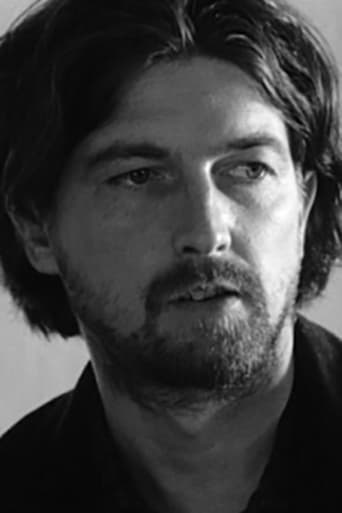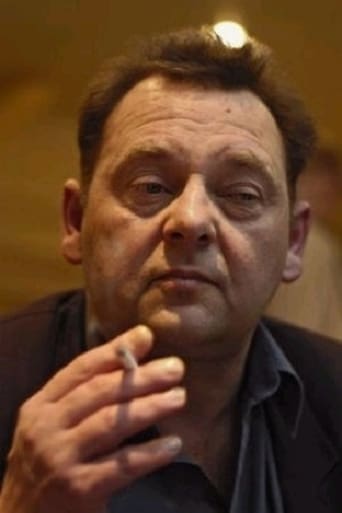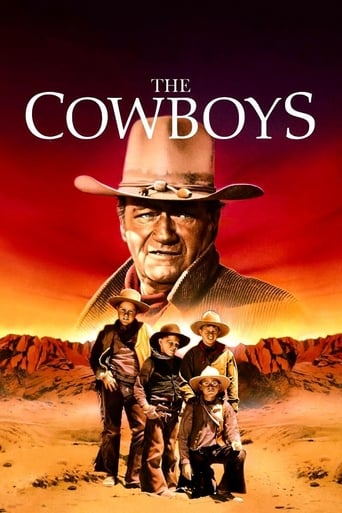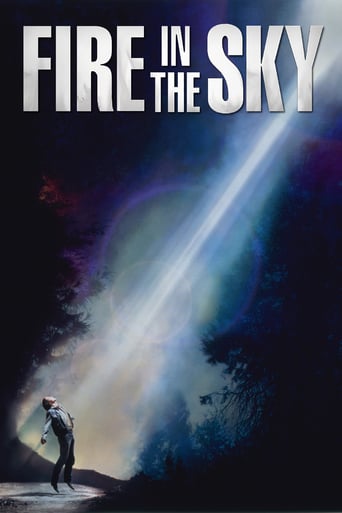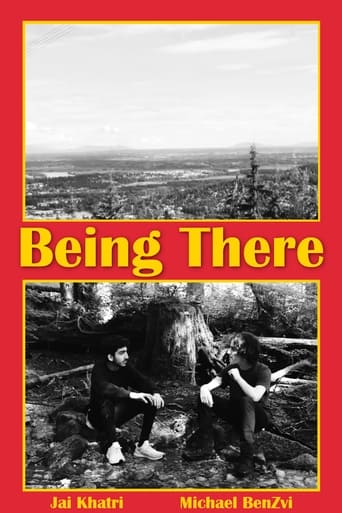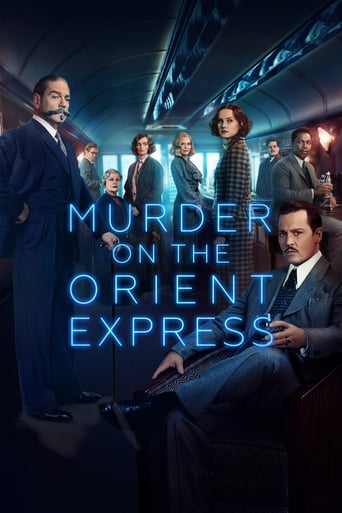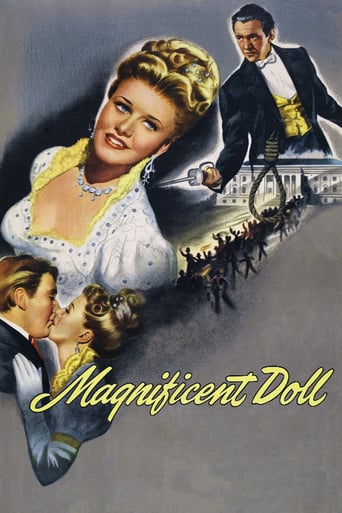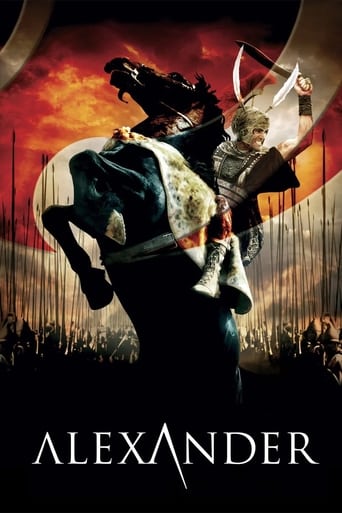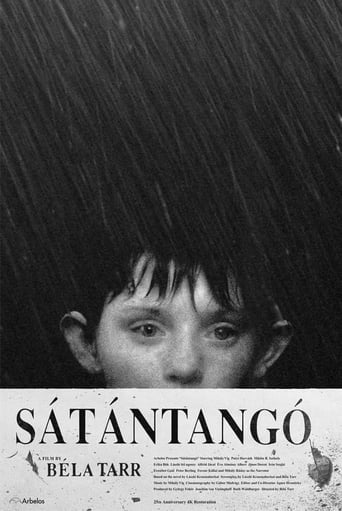
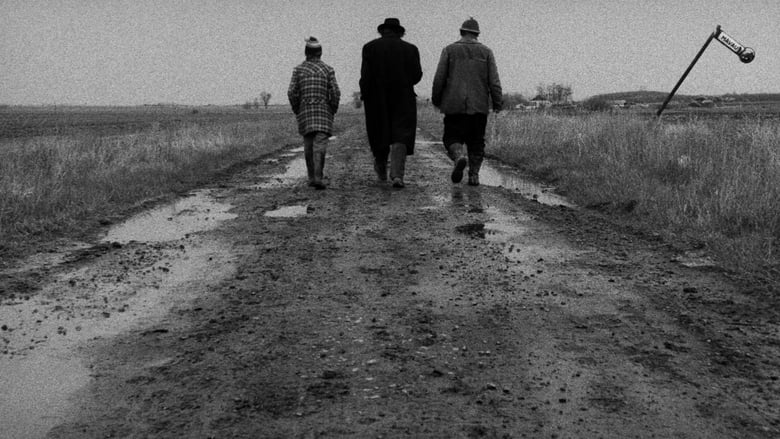
Satantango (1994)
Inhabitants of a small village in Hungary deal with the effects of the fall of Communism. The town's source of revenue, a factory, has closed, and the locals, who include a doctor and three couples, await a cash payment offered in the wake of the shuttering. Irimias, a villager thought to be dead, returns and, unbeknownst to the locals, is a police informant. In a scheme, he persuades the villagers to form a commune with him.
Watch Trailer
Cast


Similar titles
Reviews
Tarr has shown to be a quite talented director, just see "Werckmeister Harmonies" and you'll know why, he is famous for using extremely long shots, and with this film it's the apex of what his cinema has to offer: very long shots, beautiful landscapes, deep sadness and human's evilness. But unfortunately, "Sátántangó" had pretty much everything to be the so called masterpiece, but the film's idea is greater than the film itself, which is a shame. The film is build up like this: the characters by little start to connect with each other. It has many histories but the central one involves the comeback of a man who will try to create a better society using the money of the residents of the community. It's interesting what Tarr tries to do here and the concept is great, but the way Tarr made the film ended up making this a film that sometimes fells too short, other incredibly long. There are amazing things about this film which make it at least worth watching, for example the breathtaking cinematography and the incredible soundtrack (which sometimes are used with mastery by Tarr making some scenes that you can almost feel that you are in that place with those characters, but not most of the time), and some of the "sub stories" are very interesting both in concept and the way it's developed, but this is just a little bit of the film. In the beginning it doesn't sound exaggerated his use of long shots, but for a film that is seven hours long, soon or late the film will get boring, and when it does it becomes almost impossible to still watch it. One could say that he uses long shots so the viewer can pretty much "feel" that he is on that place with that people, it works sometimes but not most of the time. The characters come and go (most come back) but Tarr does not let the public to create empathy with pretty much all of them. The main problem of this film is not only that it has long (very long) length, but Tarr fools the audience with smart monologues, the beautiful landscape and the soundtrack, but when actually on the ground there is nothing too much complex about it. Tarr tries to point how community (not just from the film but in general) is corrupted and how people are evil, but besides the film's beautiful long shots, there is nothing too original about the film. You can admire Tarr for beautiful and heartbreaking moments he creates such as the Estike part (might be Tarr's greatest and most moving moment) and others you can despise him for using extremely long shots that after sometime starts to sound annoying and pretentious. And the same happens with most of the characters: in the beginning, you get that they are real human beings with a evil side just like everyone, but then after some hours that they start to get superficial and implausible, they start to sound only like human beings with no "good" side and only moved by greed and alcohol (I also wonder if one of the reasons why Tarr chosen to make this a seven hour film is that when the film shows some problem you won't notice that because or he is fooling the audience with the film's beautiful landscape or the viewer is already too much tired to notice any problem). Even thought Sátántangó can be the apex of Tarr's self indulgence it also can be a good exploration of how a community work, it is a haunting film, filled with great cinematography and some memorable dialogues and moments, and he does have a message to tell and sometimes he is able to tell it in a very good way, but his pretentiousness and distance won't help much, therefore, it is a film you can admire for wanting to say something "new" with a original touch by Tarr but himself does not allows the audience to admire it for other reasons that are emotionally related. A film that disguises itself as a film that has a lot to tell when actually it's ambition does not let it go too much far, a film filled with exaggerations (and I'm not just saying that only because of the time of the film but also because some "sub stories" does not sound necessary to the plot and it's not interesting to watch, and even if there is a message there, the boredom won't let see)
No film is a 'masterpiece' if it involved physically torturing an obviously distressed cat for 10 minutes,throwing it around like an object, before wrapping it in a net bag and hanging up, then returning with a saucer of milk which is 'supposed' to have rat poison in it, physically forcing it to drink by pressing it's head down then - in the very same shot - standing by while the cat succumbs to unconsciousness, only for the character to be seen walking around with the corpse of the same cat in the next shot.And - get this - this is not just animal cruelty. A child actor of approximately 12-13 years old performs all these acts for the camera. Christ knows what mental effect it had on her.If this film had been made by a western director, critics would be excoriating it and its director. The only thing this 'masterpiece' reveals is that hypocrisy.
Some words commonly used in reviews of this movie: "It has no plot" "Nothing happens" "It's very long" "It's too long" "Beautiful" "Brilliant" "Masterpiece" "Boring" etc, etc...Every word you read about this movie is true. Including the ones that criticize it.It's not a matter of opinion so much as a matter of fact.Every opinion about this movie is acceptable, there is no right or wrong. Which is something that cannot be said about most other movies.The story of Satantango can be interpreted in many ways, you can make up your own mind.Is it ostensibly about the aftermath of the fall of the Soviet Union, when people in unprofitable collective farms found themselves left without a future, when the milk of human kindness stopped flowing from the abundant teat of the Communist State, when empty ideology finally gave way to grim reality? Possibly. The metaphors abound if you want to look for them.Or maybe it's just a boring story of some boring people in a muddy village who get conned by a bloke they thought was dead, filmed by someone who didn't know when to shout "Cut!"Why should you watch this very long black and white movie, where nothing much appears to be happening, about a group of forlorn and hopeless people living in a broken down village in the middle of nowhere, where it's either windy or raining all the time, waiting for a mysterious and slightly sinister con man to take their money in the hope of a better life?Well, it really depends on you.Few movies can match Satantango for beautiful photography and majestic cinematography. The camera either moves in glorious long tracking shots; slow, circling crane shots and long steadi-cam walking shots or it records long takes from a fixed tripod as the action, or sometimes lack of it, takes place. The few movies that can match it are mostly made by Bela Tarr.Those that say nothing happens are watching from the narrow brief of what happens in other movies, which is that they exist to entertain. Satantango is not one of these.Just as in Tarkovsky's movies, to which Bela Tarr's movies are closely related, time is just as an important dimension as space. Real time, as opposed to edited time fragments chopped together to present a story in non-linear real time representation. In other words, a movie edited to present a complete story in 90 minutes. A beginning, a middle and an end. Satantango is not a complete story. What it portrays begins before we start watching and continues after the cameras stop recording it. We are merely observing the minutiae of everything that happens, just as in real life we observe every moment of our life passing, it cannot be edited.Maybe that's the key to Satantango.Life cannot be edited.Or maybe I'm just another pretentious reviewer who loves beautiful black and white movies like this one.You decide.
I was familiar with Tarr's "Harmonies of Werkmeister", but i think there is noway that they match this unprecedented masterpiece! Take 7 hours of your lifetime and watch the film, not a single minute is needless! Perfect cinematography, pace, music, photography. Acting was flawless and i think that many of the actors were amateurs. The whole child's episode offered one of the most moving performances in the history of cinema! Tarkovsky sure is an influence for Tarr. While watching it the only scene that seemed needless was the Doctor-episode, but the end of the film put the things in order - or not? Nothing less than an heroic feat in the history of cinema! Right from the famous opening scene i was mesmerized. Cyclical time is the main subject of this movie (others are human seek for purpose, truth, religion) based on a Hungarian novel and i think that a basic key to try to grasp this movie's meaning is the art of intellectual creation trying to alter or transcend time and space (novel in a novel - movie in a movie). I'm going to watch "Damnation", as soon as I find the just position for Satantango in my top 10 movie list of all time, why not contesting my number 1, which is of course "Citizen Cane".


